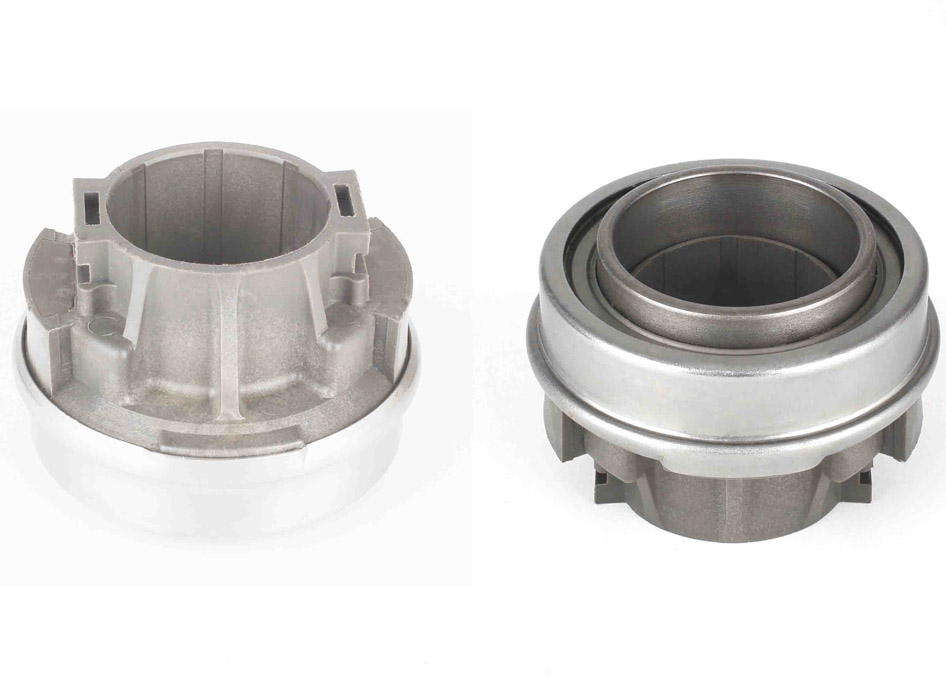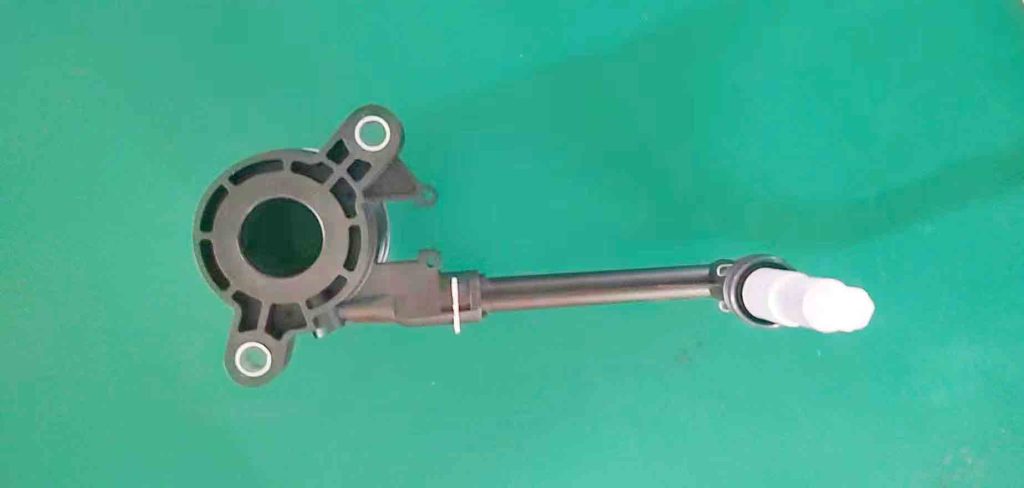What Are Clutch Release Bearings and How Do They Work?
To engage the clutch, let go of the clutch pedal.
When you let go of the pedal, the pressure plate applies a force to the clutch disc, causing it to engage the flywheel.
The release bearing is stationary at this point, not rotating with the pressure plate.
The clutch release bearing remains stationary and does not rotate during normal operation.
When the clutch is engaged, the vehicle should also be stationary.
The following is a basic explanation of how clutch release bearings work.
Vibrations
If you’ve noticed that your vehicle’s clutch pedal makes strange noises or shifts gears too slowly, your clutch release bearing may be worn out.
A worn-out clutch release bearing has increased clearances in the release area, resulting in strange noises.
To isolate the issue, conduct a road test with the clutch pedal pressed to the floor and the transmission in first gear.
If the noise continues, the release bearing or pilot bearing is most likely to blame.
The diaphragm spring controls how far the clutch engages when it is not the release bearing itself.
The clutch will not engage evenly if the diaphragm spring is damaged.
The clutch pedal vibrates as a result, which may result in uneven clutch engagement.
A misaligned Master or Slave Cylinder is another possibility.
The clutch slave cylinder is the final component of a hydraulic clutch system.
The clutch slave cylinder, via the release fork, activates the clutch release bearing.
The throwout bearing has unique lubrication characteristics and wears out over time.
It could be harmed by high speeds or an accident.
Heat and wear can also cause the clutch release bearing to fail prematurely.
The throwout bearing also causes a stiff clutch pedal, making it difficult to change gears.
Transmission and engine noises can also be caused by the clutch pedal.
Fortunately, this issue is simple to diagnose and repair.
A worn clutch release bearing, in addition to these issues, can cause excessive pedal vibration.
The pressure plate is not aligned with the throw-out bearing, which causes this vibration.
When the clutch pedal vibrates, the clutch release bearing is most likely to blame.
A rough pedal feel can also be caused by a misalignment of the pressure plate and throw-out bearing.
Excessive vibration can also be caused by broken pressure plate springs and covers.
To identify a worn clutch release bearing, you must first understand how the mechanism operates.
It is a complex assembly of millimeter-level precision parts.
Replacing a single part incorrectly can result in recurring issues.
Replacing the entire clutch release bearing solves the problem in many cases.
If, on the other hand, the problem persists and the release bearing is not replaced, the entire clutch assembly will most likely need to be replaced.
Cost
A noisy clutch could be the source of your problem.
Consider replacing the clutch release bearing to solve the problem.
This relatively inexpensive part is an important component of the clutch and should be replaced when necessary.
The cost will vary depending on the make and model of your vehicle, but a proper replacement can significantly improve your vehicle’s overall performance.
The familiar “clicking” and “clacking” noises associated with a noisy clutch may also be heard.
The throw-out bearing is an important component of the clutch.
It disengages the currently selected gear and engages the next.
The clutch release bearing is a critical component made of metal.
In an ideal world, you should replace the entire clutch.
This is due to the increased cost of labor and parts.
It is critical to remember that the throwout bearing is essential for smooth gear shifting.
Damaged throwout bearings can make shifting gears difficult, resulting in a poor driving experience.
To avoid problems with this bearing, take your vehicle to a reputable auto mechanic as soon as you notice any issues.
The throwout bearing’s lifespan is determined by the make and model of your vehicle, as well as your driving habits.
The clutch release bearing is a small component in your transmission that aids in clutch engagement and disengagement.
It rides in a bearing carrier and is supported by a hub.
When the car starts, a release cable moves the release fork, pushing the thrust face of the bearing into the fingers of the diaphragm spring.
The bearing absorbs the rotary motion of the spring fingers and allows the clutch plate to be released.
The needles in the clutch release bearing lose precision over time.
The needles change shape and size as a result of friction and strain.
The release bearing can also come loose from its bushing, which is fatal.
A faulty release bearing can cause significant damage to your gearbox.
When you step on your car’s accelerator, you will hear a whistling noise.
Furthermore, if the clutch release bearing reaches its wear limit, you may be unable to disengage the clutch.
Symptoms
The noises you hear when depressing the clutch pedal could indicate a faulty clutch release bearing.
This is due to the tight tolerances of the rollers inside the clutch release bearing.
When the rollers are too far apart, they make noises that resemble transmission vibrations.
When you hear one of these noises, you will usually notice symptoms of clutch release bearing failure.
Then, make an appointment with your mechanic.
If your car stalls while you’re pressing the clutch, it’s a sign that your throw-out bearing is worn.
This can cause traffic jams or even road blockages.
If you notice any of these symptoms, you should take your vehicle to a mechanic to avoid costly repairs.
While you’re at it, keep an eye out for other indicators, such as a stiff clutch pedal.
You should also avoid ignoring any of these symptoms because they may indicate a serious problem.
A whining noise when depressing the clutch pedal is the first sign of a faulty clutch release bearing.
Aside from the noises, you may also notice vibrations in the clutch pedal and difficulties shifting gears.
If you don’t solve the problem right away, you might end up in even more trouble than you started with.
If, on the other hand, you’re looking for the source of a whining noise, you’ve come to the right place.
The next symptom is a stuck clutch pedal if the throwout bearing fails.
It’s time to replace your clutch pedal if you notice it sticking or grinding.
If you suspect that the throwout bearing is failing, have it inspected by a qualified mechanic.
This is an important component of your vehicle, and if it isn’t working properly, it can lead to a slew of costly repairs.
A faulty clutch release bearing is also to blame for the noises coming from the transmission.
These noises can be deafening to both the driver and the passengers.
When the clutch pedal is depressed, they make a rattling or grinding noise.
The noise will only get louder as you press harder on the clutch pedal.
If you do not replace the clutch release bearing, the noise will worsen.
Worse, you won’t realize it’s getting worse until it’s too late.
Repair
The release bearing, in addition to the clutch, interacts with the other clutch components.
This means that if you hear knocking noises from your clutch, you should repair the release bearing and replace the clutch.
Replacing the clutch with a new one will improve your vehicle’s overall performance.
You can eliminate these annoying knocking noises and restore your car’s performance by replacing the clutch release bearing.
A worn-out clutch release bearing will make the pedal stiff and spongy in addition to making noise.
This indicates that the clutch isn’t moving smoothly, and you should take your vehicle to a mechanic to have the problem diagnosed.
When you press the clutch pedal, you will hear a grinding or rattling sound, which indicates that the throwout bearing is worn.
If the noise is coming from the transmission area, you should be able to pinpoint its source.
Aside from a broken release bearing, the throwout bearing is another component that affects clutch performance.
When the throwout bearing fails, you will be unable to smoothly shift gears and your vehicle will not accelerate.
Avoid this issue by having your auto mechanic repair the clutch release bearing as soon as possible.
A worn-out release bearing can cause transmission problems and even necessitate transmission replacement.
If you hear a noise when pressing the clutch pedal, you’ll need to replace the clutch release bearing.
This type of noise indicates that the release bearing is worn.
A faulty release bearing can also cause vibrations in the foot, resulting in a pulsing effect.
If you hear a clicking or grinding noise when pressing the clutch pedal, the clutch release bearing should be repaired.
If the noise becomes louder, the issue is most likely in the bell housing.
While the clutch release bearing in your vehicle may last as long as the rest of the clutch assembly, it can fail before the pressure plate linings.
Symptoms include lubrication loss, dust and water ingress, and a whining noise when you press the pedal.
Look for pitting on the bearing’s internal surface as well.
If you notice any of these symptoms, you should have your vehicle inspected by a qualified mechanic.


